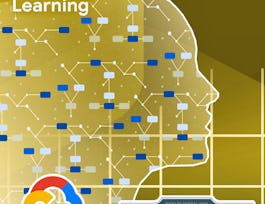In this 4 week course, you will learn about Smart Beta products. Smart betas products have the characteristics of both passive investment(having predetermined rules) and active investments(allows for factor investment). We will walk through the creation mechanisms behind different smart beta products and recreate some of them using R programming. Then we will apply machine learning methods. Data processing, overfitting prevention techniques will be covered. Finally we will try to create an improved multi-factor model using CART, bagging, boosting and ensemble methods. Students are expected to have listened to my first and second course 'The Fundamental of Data-Driven Investment' and 'Using R for Regression and Machine Learning in Investment', or having equivalent knowledge in investment concepts and a firm grasp on R programming.


Machine Learning for Smart Beta
Taught in English
Recommended experience
Skills you'll gain
Details to know

Add to your LinkedIn profile
1 assignment
See how employees at top companies are mastering in-demand skills


Earn a career certificate
Add this credential to your LinkedIn profile, resume, or CV
Share it on social media and in your performance review

There are 4 modules in this course
Building on the concepts learned in previous courses 'The Fundamental of Data-Driven Investment' and 'Using R for Regression and Machine Learning in Investment', this course will cover 'Smart beta'. Smart betas products have the characteristics of both passive investment(having predetermined rules) and active investments(allows for factor investment). Smart beta products' investment mechanisms are open to the public, so we will recreate a MSCI smart beta product in R. Follow along the step-by-step reconstruction of the MSCI Enhanced Value Index and create your own smart beta portfolio.
What's included
5 videos1 assignment
In order to effectively utilize machine learning in investment, it is important to understand the various characteristics of data. This module covers how to check the prediction accuracy of a machine learning model and prevent overfitting. Get hands on experience in R to manipulate data into a form suitable for machine learning models from regression models to classification trees.
What's included
4 videos
The asset selection method based on a score derived from a benchmark index has the problem that the selected assets do not reliably capture underlying information. To solve this problem, a non-traditional method, namely machine learning is used to create an improved multi-factor approach. Familiarize yourself with CART(Classification and Regression Tree), bagging, boosting and ensemble methods to enhance your smart beta portfolio in R.
What's included
4 videos
In this final module, we wrap up the discussion by creating a multifactor model applying all the knowledge we have learned so far. Investors have taken a steady interest in multifactor models that take into account the cyclicality of factors. Further, we expand the discussion into the use of factors in bond investment and a new method of active factor allocation.
What's included
5 videos
Offered by
Recommended if you're interested in Finance

EDHEC Business School

Coursera Project Network

New York Institute of Finance

New York Institute of Finance
Why people choose Coursera for their career




New to Finance? Start here.

Open new doors with Coursera Plus
Unlimited access to 7,000+ world-class courses, hands-on projects, and job-ready certificate programs - all included in your subscription
Advance your career with an online degree
Earn a degree from world-class universities - 100% online
Join over 3,400 global companies that choose Coursera for Business
Upskill your employees to excel in the digital economy
Frequently asked questions
Access to lectures and assignments depends on your type of enrollment. If you take a course in audit mode, you will be able to see most course materials for free. To access graded assignments and to earn a Certificate, you will need to purchase the Certificate experience, during or after your audit. If you don't see the audit option:
The course may not offer an audit option. You can try a Free Trial instead, or apply for Financial Aid.
The course may offer 'Full Course, No Certificate' instead. This option lets you see all course materials, submit required assessments, and get a final grade. This also means that you will not be able to purchase a Certificate experience.
When you purchase a Certificate you get access to all course materials, including graded assignments. Upon completing the course, your electronic Certificate will be added to your Accomplishments page - from there, you can print your Certificate or add it to your LinkedIn profile. If you only want to read and view the course content, you can audit the course for free.
You will be eligible for a full refund until two weeks after your payment date, or (for courses that have just launched) until two weeks after the first session of the course begins, whichever is later. You cannot receive a refund once you’ve earned a Course Certificate, even if you complete the course within the two-week refund period. See our full refund policy.




